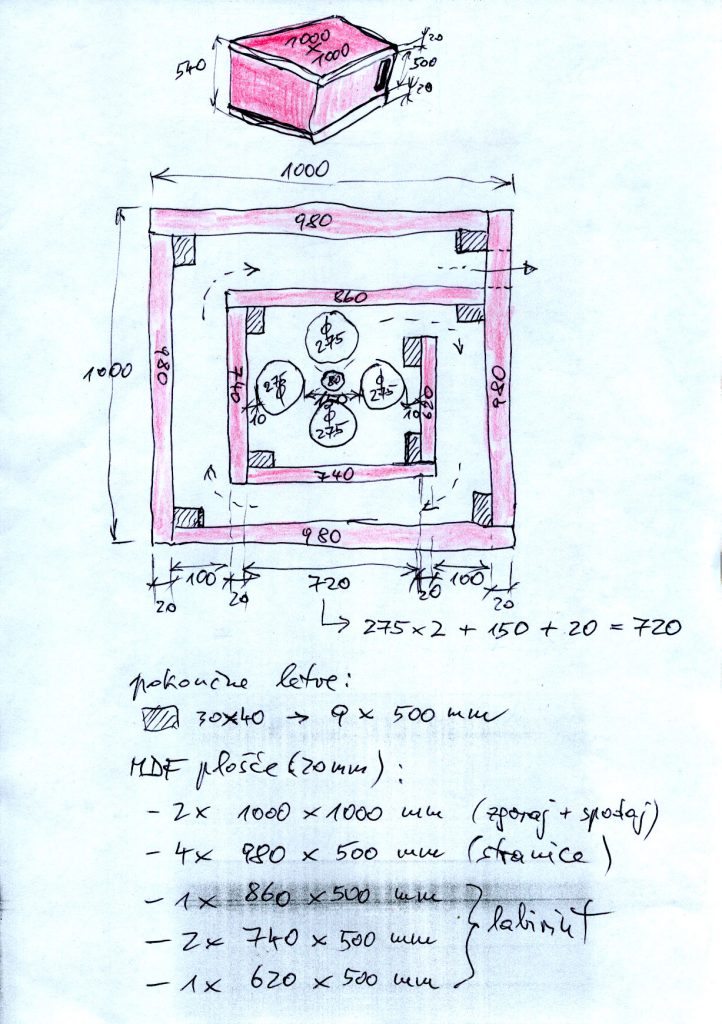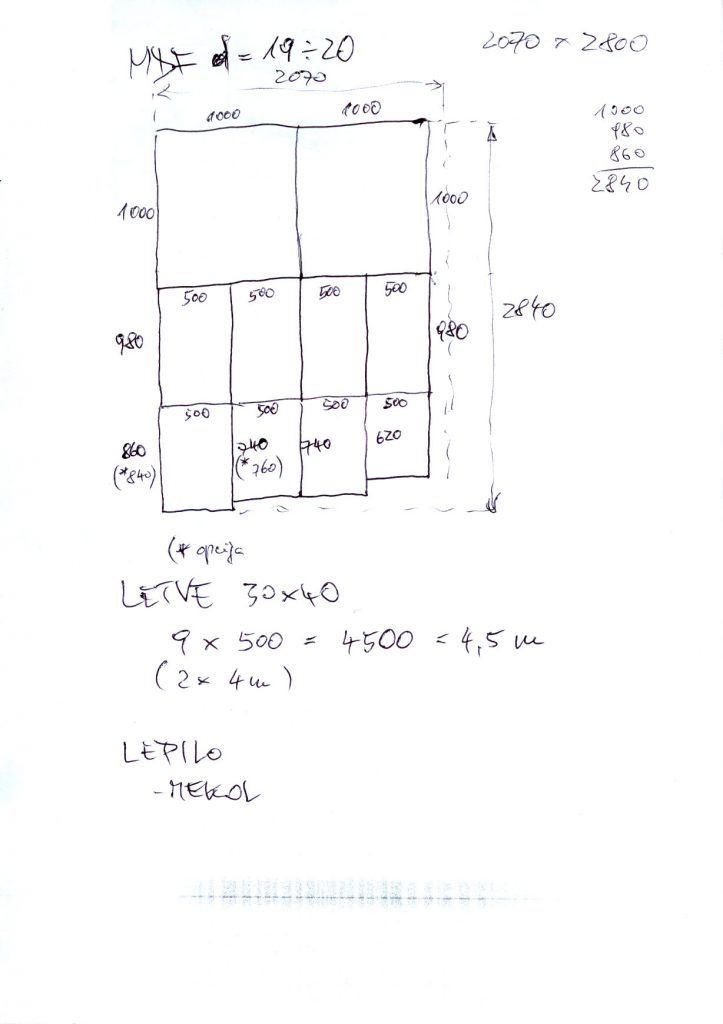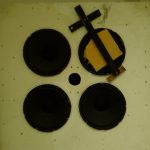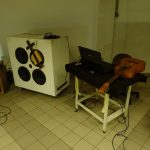After some research of how to build a real subwoofer system for the projects at Cirkulacija 2, the two main principles emerged:
– transmission line (a quarter wavelength) principle
– and a bass-reflex principle
In both cases there is an additional tuned situation at the lower end of woofer frequency spectrum, that allows to get about an octave lower response – then the loudspeaker’s enclosure resonance allows.
The usual approach to push the loudspeaker lower frequency resonance to the lowest possible frequency is to use the closed enclosure. For the usual 25cm diameter loudspeaker this would be about 40 to 50Hz. Sometimes even 20cm woofers can go that deep (e.g. Dynaudio 22W75).
There are quite some loudspeaker systems around (the net…) that use a combination of the two approaches (transmission line/ labyrinth, bass-reflex) – combined also with more or less closed enclosure. Various degrees of combinations produce combined results. Here we are interested only in lower frequency spectrum response. Transmission line seemed to me the better solution – combined with a large degree of closed enclosure.
A cabinet structure was thought of that does not resemble anything found elsewhere: a central cabinet, with about 3m long transmission line tube – around the central cabinet. A kind of centrally driven snail shell. The image below shows the idea of the upright standing cabinet – with four woofers at the front and the transmission line pipe all around – the vent coming out at the side.
Of course, as with all audio, there is esoteric thought at work at loudspeaker cabinets too. The loudspeaker/cabinet theory usually deals with waves, and a lot of solutions try to help to eliminate cabinet standing waves with 45 degrees brackets and similar “linearizing” transmission line helpers, etc… In above design the pipe is not wrapped vertically behind the speaker – as is with almost all the existing solutions – but it is derived from a relatively large central cabinet laterally – and then wrapped around. I find this principle an original approach with no immediate similarities. So let’s call the principle BorutSub… or turboSub.
With the lowest frequencies in question I decided to drop observing the wave behaviour and think of it as moving of the (air) mass. The wavelengths are 3 to 10 m – the idea of wave-lovers is that there is no air moving back and forth (“there are only pressure changes”) is not very smart – since air at low frequencies is actually being pushed and pulled for quite some meters… just put your hand to the vent… So, internally in the central cabinet we have a kind of compression/ decompression situation, where air is allowed to move back and forth through the transmission line pipe – part of the cabinet itself. In this way the building of the cabinet was quite easy.
Below is the cabinet cutting plan that i made for the local wood store.
I decided to use four 30cm woofers (at first very cheap ChInese generic 30cm woofers that soon died, later relatively cheap Visaton W 300-8 that function properly).
Connected as two pairs in series and then these two pair in parallel. Hm, not very smart thinking, since if one woofer dies – another also stops to function.Plus: the impedance rises to 16 ohms – and the power is halved. A better way is to form two parallel pairs and then these two pairs connected in series – we are at 8 ohms again. If one woofer fails the other continues to function – a bit over-driven – the total impedance jumps to 12 ohms – only a bit less power.
Some pictures of a built prototype in use. The small hole between the four loudspeakers is not bass-reflex vent – but a mounting hole for the cabinet to be put on a special stand. Lately, the protective / filtering (dense) fabric was put in front of four loudspeakers.
- OLYMPUS DIGITAL CAMERA




